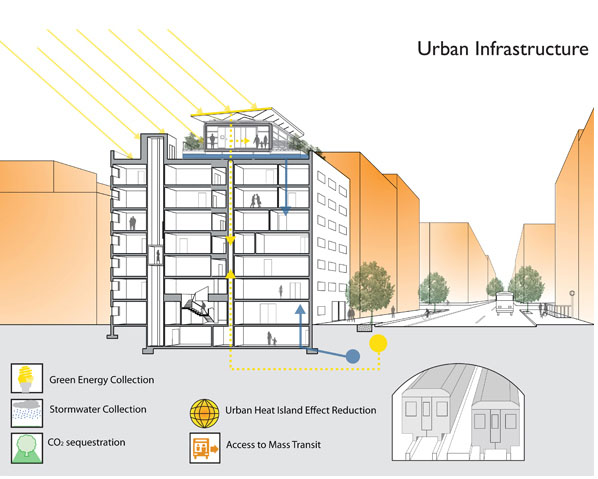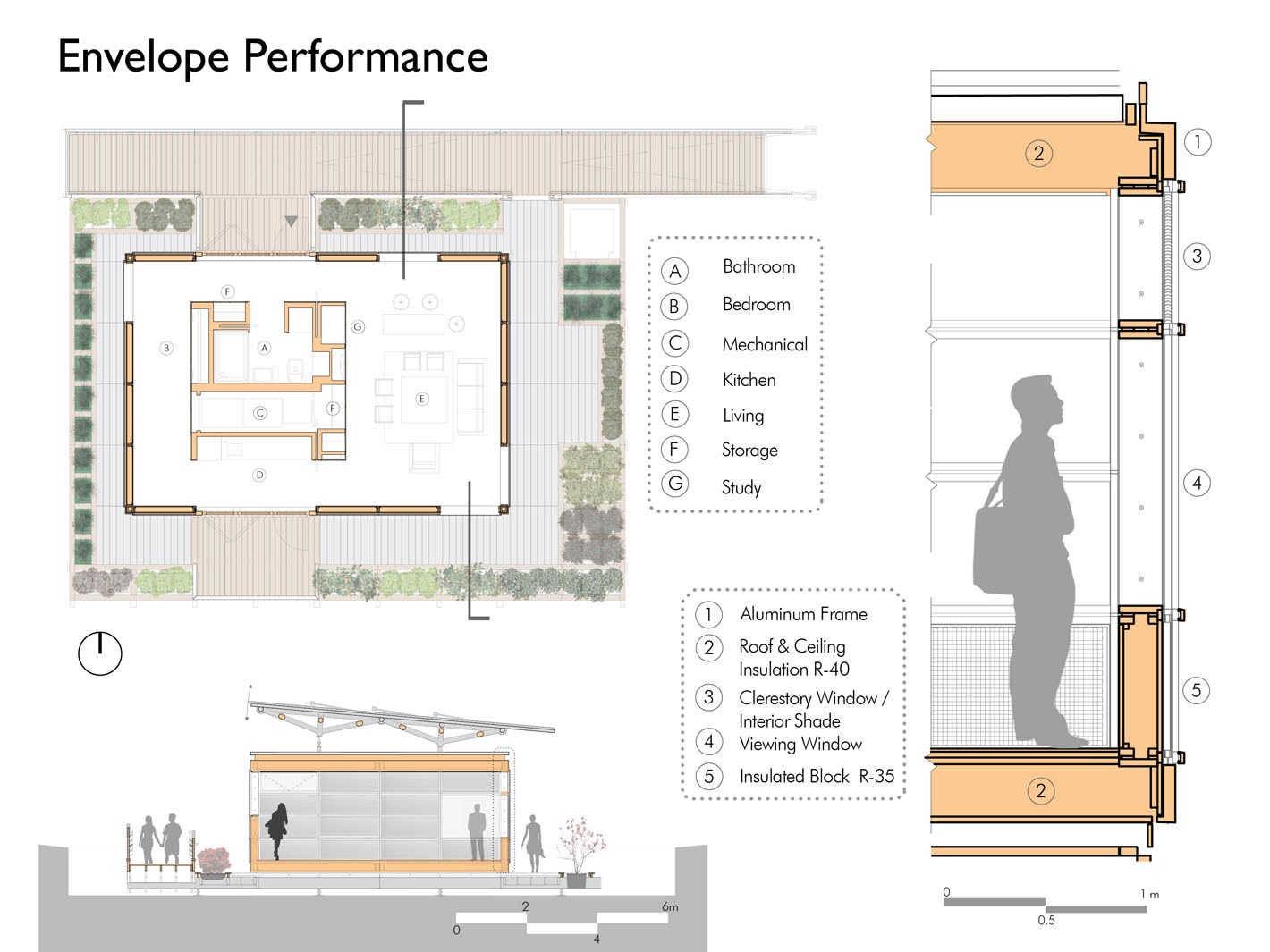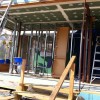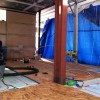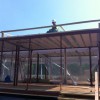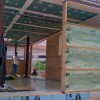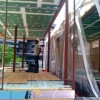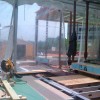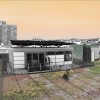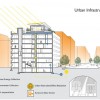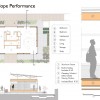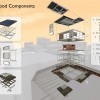Video
Imagine that all of New York City’s rooftops are covered with photovoltaic panels. They could provide enough electricity to meet around 14% of the city’s needs, according to calculations by Tria Case, one of the City College of New York's directors. Comprised of students from The City College of New York’s (CCNY) Bernard and Anne Spitzer School of Architecture and Grove School of Engineering, Team New York, who are competing for the first time this year in the Solar Decathlon, asserts that NYC’s roofscape is vastly underutilized, not only for its potential in collecting solar energy but also for its potential to provide prime living and outdoor space for its citizens. Their design for the Solar Roof Pod could prove a versatile and sustainable solution.

The Solar Roof Pod, made of lightweight yet durable materials, can be assembled on existing rooftops of mid-rise residential or commercial buildings. Its modular system is comprised of 64 “building blocks,” which can be transported to the roof via freight elevator, stairs, or crane. Team New York designed four different types of interchangeable blocks, allowing the occupant to customize his or her home. Solid blocks feature poplar wood cladding on the interior and exterior, and they are infilled with spray foam insulation. Other blocks contain photovoltaic panels, triangular prisms, or standard windows that capture the skyline view while incorporating bird-safe glass. Building blocks combine into 5'4" X 8' modules, which are supported by a steel dunnage system that evenly distributes the structure’s weight across the rooftop.
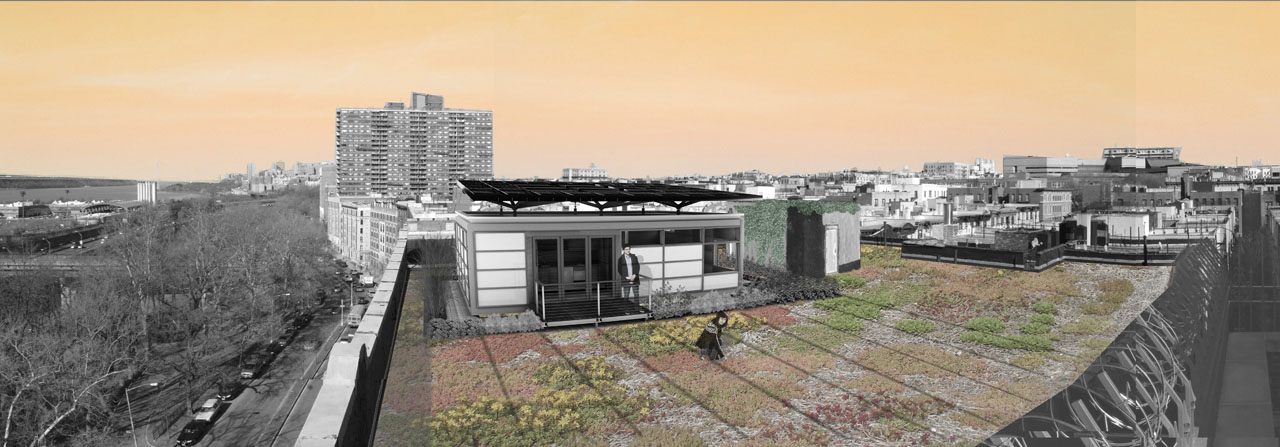
“It’s all been about layers, building in layers." Farah Ahmad, Architecture Student and Public Relations Manager for Team New York

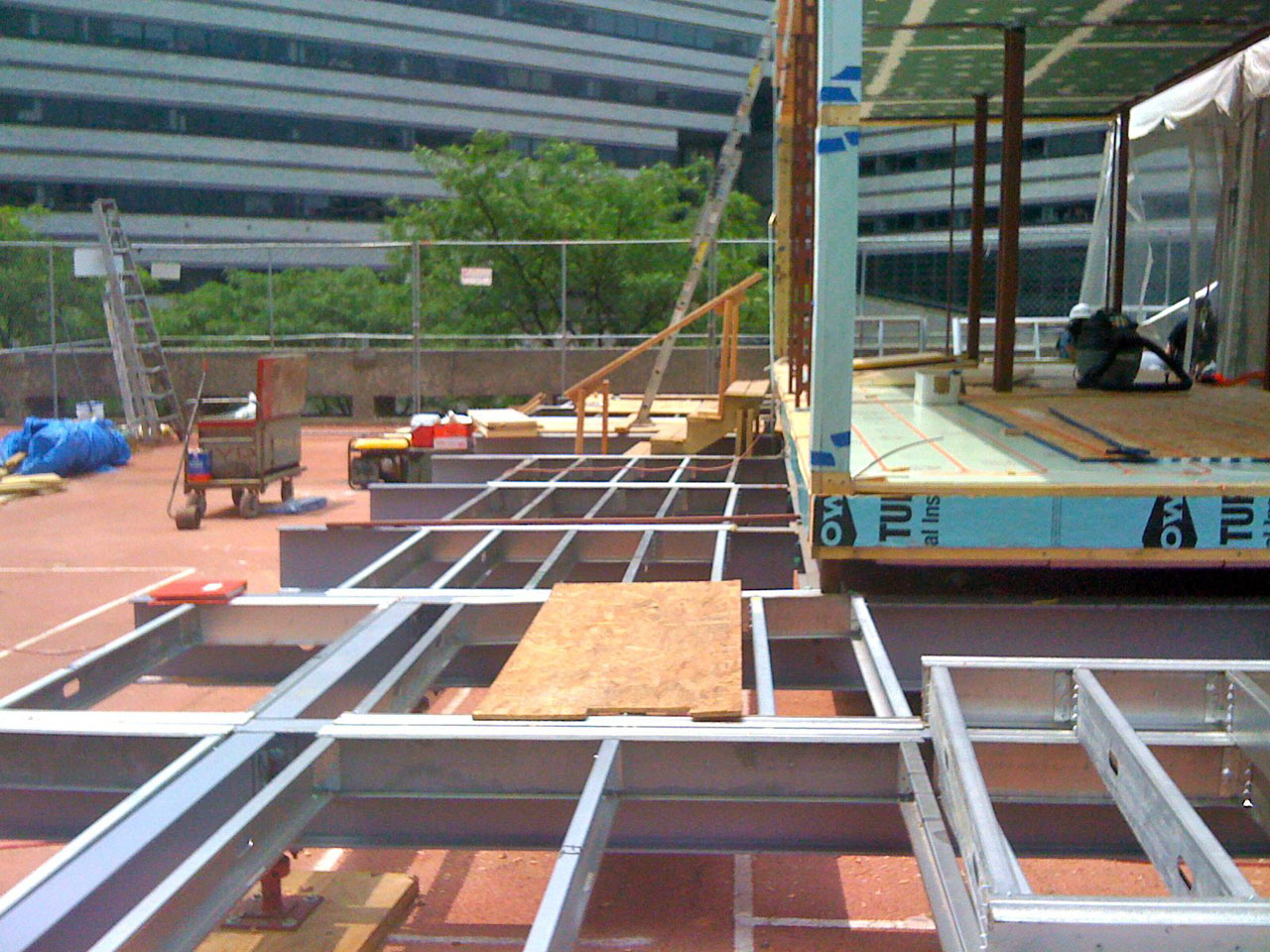
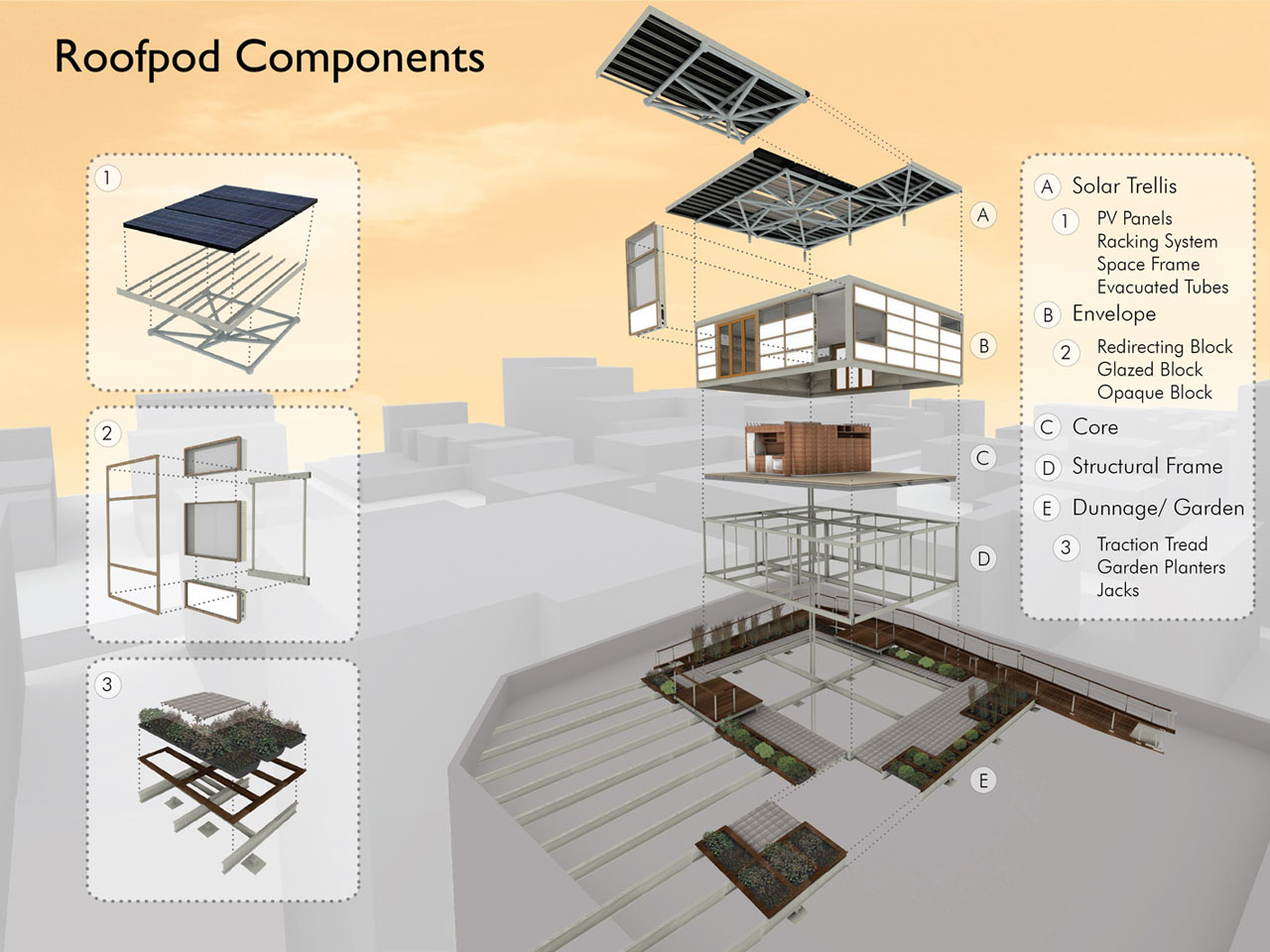
Team New York began assembling the modules in a former firehouse owned by CCNY before moving the construction site to the school’s rooftop. For purposes of the competition, the team designed the house in two modules that can be loaded onto trucks and shipped to Washington, D.C. (Conveniently, there is ramp access to this portion of the school’s roof.) Students are working in shifts day and night to complete the project, and so far, “it’s all been about layers, building in layers,” shares Farah Ahmad, an architecture student who is also responsible for public relations for the team.
The interior of the pod, accordingly, is all about flexibility. A central mechanical core consolidates equipment and the bathroom while serving as a spatial organizer within the otherwise open, loft-like environment. In order to create more privacy, a sliding door system featuring NanaWall technology extends from the core to divide the space, if desired. Other programmatic functions can activated by the occupant, such as folding the bed into the wall.
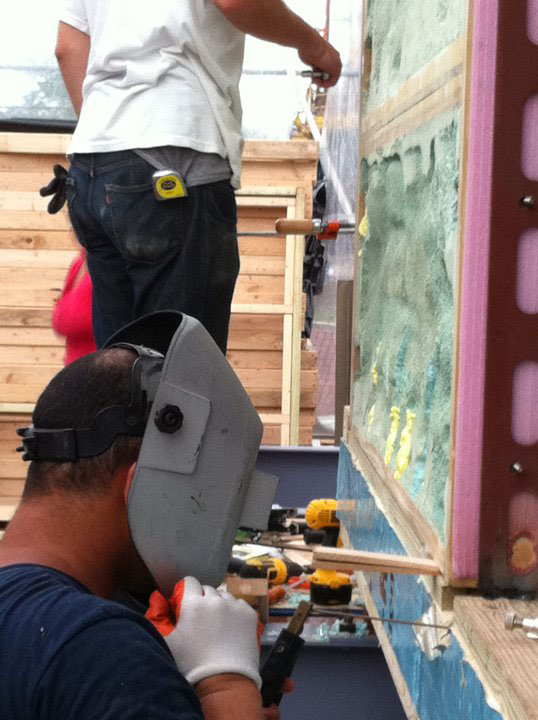
The Solar Roof Pod achieves net zero status thanks to photovoltaic panels mounted on a solar trellis that will provide electricity to power the home, and solar thermal collectors will run the air conditioning system and supply hot water. The interior will also be
heated by a radiant flooring system. Engineering students have designed an iPhone application that will allow occupants to adjust the HVAC system and even dim the lights. A weather instrument will monitor conditions on the roof. The Solar Roof Pod will feature built-in planter bins, which, along with a garden area, will reduce stormwater runoff and help to mitigate the heat island effect, supporting Mayor Bloomberg’s PlaNYC 2030 initiative, which aims to transform the city into a greener place as it swells by another million inhabitants in the coming two decades.
Team New York’s imaginary occupants for the Solar Roof Pod are a young couple: one serves as a manager/super for the entire building upon which the Solar Roof Pod is located and is in charge of evaluating its energy use and performance. The other is a horticulturalist who manages the rooftop garden. Although the Solar Roof Pod is configured as a residence for the purposes of Solar Decathlon 2011, Team New York believes that it could serve many different uses, such as a community space, event space, or laundry facility for a building’s residents.
In a city that lacks space for new ground-up projects, the Solar Roof Pod’s Lego-like approach is practical and could also positively shape the skyline. Faculty advisor Christian Volkmann points out that water pressure became an issue in late 19th century buildings when height exceeded the constraints of technology. Water towers became icons, but they are also functional. He believes that the Solar Roof Pod could do the same for NYC’s skyline.

Murrye Bernard
Murrye is a freelance writer based in New York City. She holds a Bachelor's degree in Architecture from the University of Arkansas and is a LEED-accredited professional. Her work has been published in Architectural Record, Eco-Structure, and Architectural Lighting, among others. She also serves as a contributing editor for the American Institute of Architects' New York Chapter publication, eOculus.
Website: www.murrye.com
